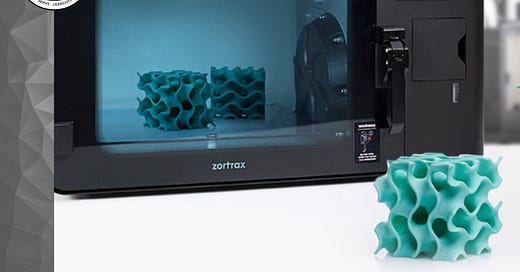10-30-2018: Zortrax introduced Apoller
The proprietary system for automatically smoothing 3D prints made with FDM/FFF technology
On October 30, 2018, Zortrax, a Polish manufacturer of desktop FFF 3D printers, launched the Apoller – an intelligent device that enabled automatic smoothing of 3D printed parts, using selected filaments. This was the company’s fifth product release in a short span – following launches of new 3D printers - the M200 Plus and M300 Plus, its first photopolymer 3D printer, the Inkspire, and the HEPA Cover.
Apoller stood out for its innovation and uniqueness, seemingly solving one of the biggest quality challenges in FFF 3D printing. Unfortunately – it proved otherwise...
Apoller automatically smoothed 3D-printed parts made from ABS, ASA, and HIPS. It operated using two common solvents – acetone or MEK, which were heated, and the resulting vapors smoothed the surfaces in a controlled manner. The device had a work chamber of 30 x 25 x 25 cm, which was hermetically sealed and double-insulated.
The entire process took about three hours, and the smoothed models were ready for immediate use without any need for additional post-processing. All components were certified under the ATEX Directive 2014/34/EU, which governs safety standards for equipment used in explosive atmospheres.
The issue of surface smoothing for printed parts is as old as FDM/FFF technology itself. While models produced in this way are relatively quick to make, they have one problematic feature – visible layers. In some cases, surface roughness is secondary, but for certain applications, a high degree of smoothness is required.
And it’s not about figurines or vases. Smooth parts work well in moving mechanisms, as they fit together better and have reduced friction. Smoothed models are also suitable for creating casting molds. Additionally, parts with high watertightness, achieved through surface smoothing by melting the surface layers, are often required.
Apart from Apoller, the only "competitor" on the market was Polymaker's Polysher, which, however, worked only with one type of plastic (produced by Polymaker). In this regard, Apoller was far superior, offering compatibility with popular technical materials.
But little came of it… Despite an intensive advertising campaign and trade show exposure, sales were relatively low. It wasn’t a hit – no one went crazy over the Apoller. It remained simply a curiosity...
Why? High cost (over $6,000), small chamber, and long processing time, which limited throughput (only a few dozen parts per day), didn't help. People were also somewhat apprehensive about the process itself (“cooking” acetone). However, it seems the main reason was that the need for ultra-smooth part surfaces was, in reality, a myth. When safe and easy-to-use smoothing machines finally became available, hardly anyone wanted to use it.
Just as no one is producing filament at home from leftover 3D prints.
Source: www.zortrax.com








